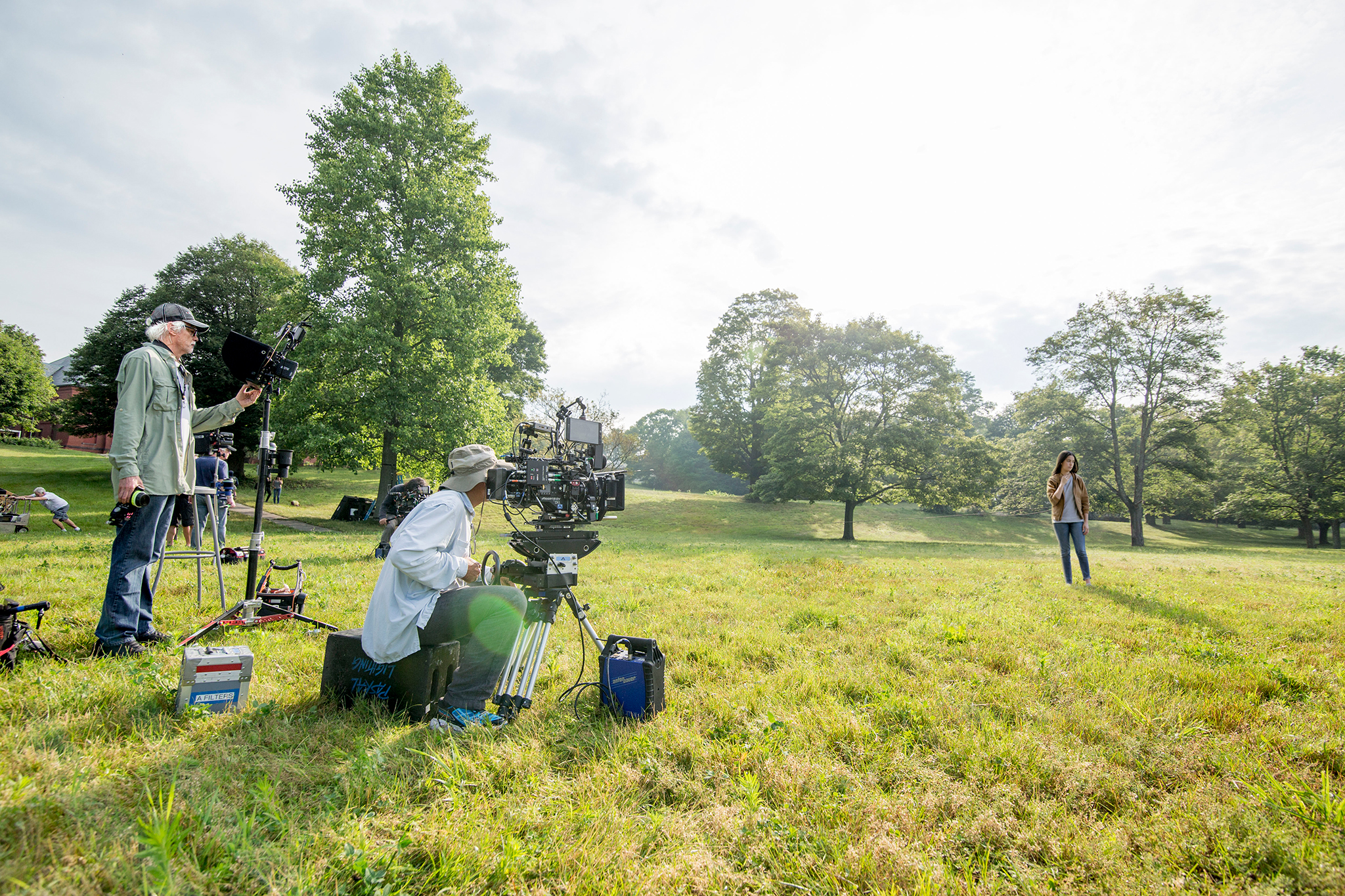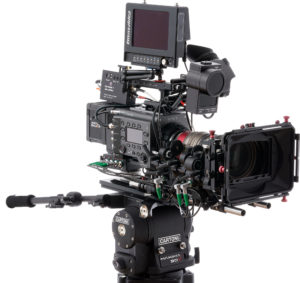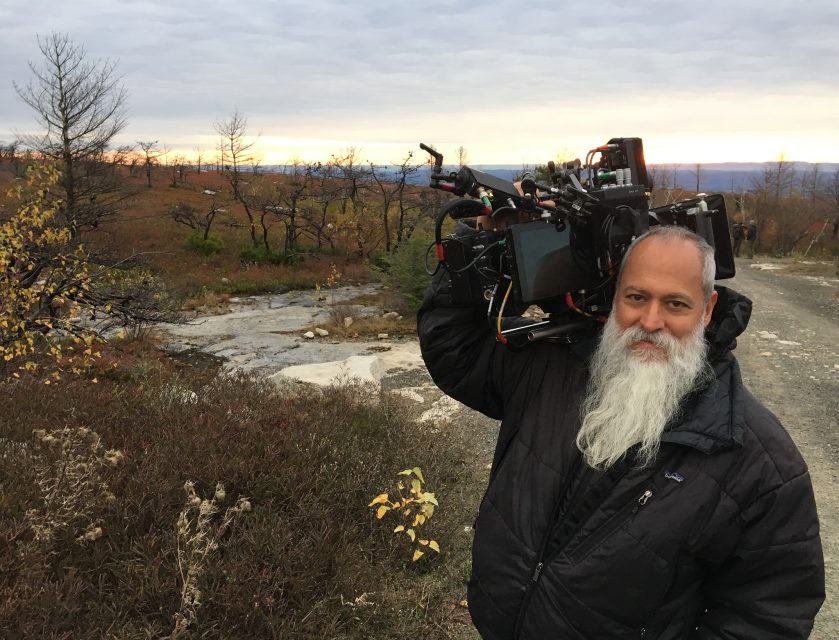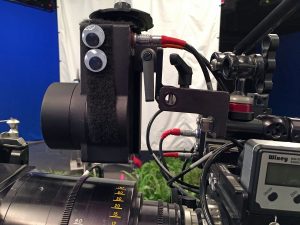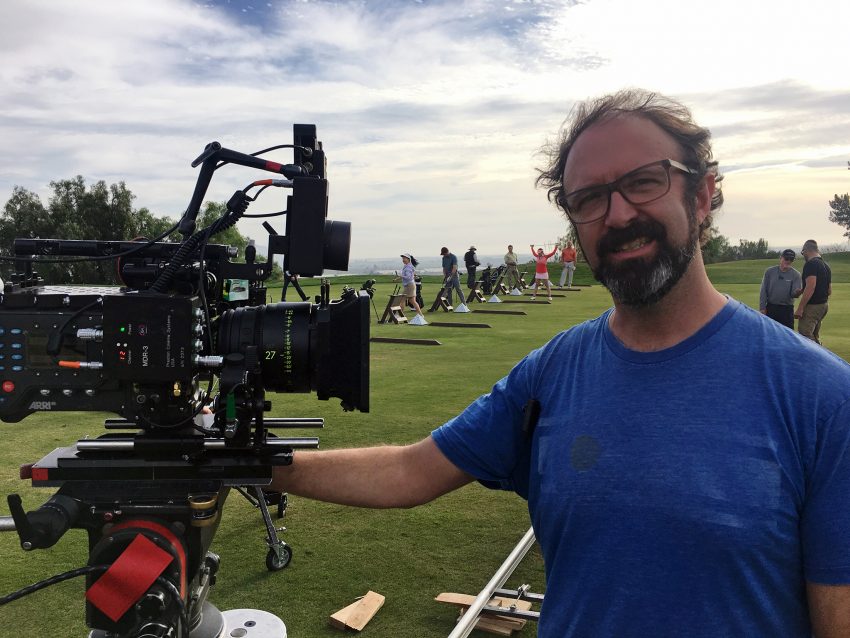Every Preston Light Ranger 2 user I’ve talked to refers to it as “a game changer.” For focus pulling on large sensor cameras I would add the phrases “an essential tool” and “job security.” My last two projects were both 65mm (one in 8K), and there is no way I could have perfectly achieved and repeated some of the shots without the LR2’s guidance. Just having the readout on the monitor is a boon, saving precious time for those split-second decisions.
After 39 years of pulling focus, the LR2 has actually made me better at pacing my focus racks for push-ins. If I pull too fast or too slow, the green bars tell me so, and I slow down or speed up accordingly. In addition, for crane, tracking, handheld or Steadicam shots the green bars tell you instantly whether the camera or actor is moving, and in which direction. It keeps you in the zone at all times.
I use the LR2’s autofocus feature for fast push-ins and sudden actor movements, but only for portions of the shot. Autofocus is also helpful for quickly focusing on slates. With the push of the off-button, the lens snaps back to the manually set distance, before the Director can say action. This technique of snapping back to or from manual to autofocus is also useful when over- cranking the camera (where you need to speed up your racks).
It’s handy for reading the distance of actors before they emerge from darkness, and other situations where the focus doesn’t “pop.” Like young actors with dark eyes and no wrinkles, in low light and no marks! Another benefit is being able to read on the fly the distance of upstage actors, and being ready for those unexpected head turns from foreground actors. I could go on and on about this marvelous tool.
On a recently completed Netflix project, DP Darren Lew and Operator Jim McConkey would remark, several times a day, how the shot we just accomplished would have been tremendously difficult and time consuming without the Preston Light Ranger 2.
This knowledge allowed them the freedom to move the camera during the shot without worrying about being off “the marks.” Consummate old-school professionals, they always made sure to alert me of any change in plans for the next take; very nice of them, but completely unnecessary with the Light Ranger.
Rehearsals? Sure, if it makes you feel better. But not needed with the Light Ranger 2.
You will never again hear the words, “We need another one for focus and I’ll need to get marks.”
The LR-2 is the key that unlocks all of the other tools.
Slider on a dolly on a dance floor? No problem, go wherever you like. Long lens on Steadicam? Flawless. Crane moving in from wide to massive close up? Nail it first take, and every take.
During The Greatest Showman we were presented with an impossible shot, the kind of shot you could try all day and never get.
It is a shot of the actress Zendaya swinging upside down from a trapeze, on a 180 mm lens, wide open, at 500 fps.
The LR-2 tracked her perfectly from 90 ft to a stunning close-up at somewhere around 9 ft.
Eyes sparkly, ears hazy—minimal depth of field. She swung 3 times, each take impeccable.
The LR-2 enables focus pullers to confidently choose focus on the fly, float splits on the move, and time focus racks elegantly.
Not only does the LR-2 render difficult shots easy, it’s fun to use! Anytime we order an additional camera, I add another Light Ranger to the package.
I want every production to expect it as commonly as ordering a matte box.
I love my Light Ranger 2.
I cannot overstate this. Howard Preston, you and your entire staff are special. Thank you.
Around Thanksgiving, I was finishing a hellacious run of back- to-back days bled together from a run of jobs, all with the same DP. Grateful for the mountain of work, I was looking forward to the end and a holiday; we all were.
The final “week” was 11 days and the hours totaled up into the stratosphere as the stage had to get shot out each day for mas- sive overnight resets. Fatigue was profound and the shots were consistently up tempo and challenging.
We made mincemeat of it all with the LR2. That’s not even the story, but yes, 14 to 18 hour days are special and when the last shot is as hard as all the rest, the LR2 would indispensably make the nearly impossible, probable and the hard stuff NBD.
We prepped the final job the next morning which was about a 4-hour turn around. The job was simple, a single shot of an actress saying one line, static on green screen. It was like a semi sick joke to keep working, but one shot, static!
Like I said, we were grateful.
It has been decided that we’ll set up exterior on a studio back lot and as our shot will be composited into a dark and sad night on an airport runway, we’ll be waiting a bit for the sun to set. This is not a pick-up for a small film, so you know there’s a lot of stuff.
Sure enough, after the walk-through the shot goes from a static camera and static actress to a 17-foot compound walk in/push in, on a Panavision anamorphic E-series 135 mm, pushing to minimum focus. It’s been a long week. Also, talent seems kinda pissed about everything—but mostly about being there.
Given the luxury of the work environment, I did 2 tests with the rest of our set crew and our stand-in actress. The auto focus engaged. It was perfect.
We did the shot maybe 10 times in 4 minutes, each a success. When wrap was called an audible wave of “What!?” rippled across set. That was the sweetest yet.
Thank you, that was special.
USA: Preston Cinema Systems: prestoncinema.com
UK : Optical Support: opticalsupport.com
France: HD Systems: hd-systems.biz/preston-cinema-service

